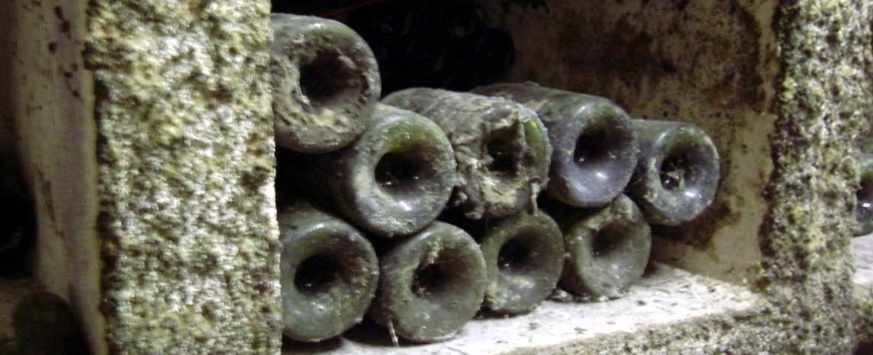 A few months ago, I said something in this spot about having multiple bottles open at a time being a sign of a certain maturity in your wine drinking. The title of the post was “The Wine Cellar in Your Kitchen.”
A few months ago, I said something in this spot about having multiple bottles open at a time being a sign of a certain maturity in your wine drinking. The title of the post was “The Wine Cellar in Your Kitchen.”
In it, I talked about the value of comparative tasting – sampling several wines side-by-side – over wine tasted without context. I suggested that the habit of having multiple bottles available was advantageous both because it gave you some options come mealtime and because it permitted you to observe how open bottles change over time, mimicking the evolution of wine in a cellar – only much more quickly.
Having multiple bottles open at once implies that you have yourself evolved in your wine-buying habits to the point where you’ve resigned your member ship in the Onesy-Twosy Club and solidly linked arms with those who have learned the many advantages of buying by the case – or at least in multiples — and made it their habit.
One subject I didn’t take up in that post, was where those wines live before they make it to the kitchen. One reason you resolved to start buying wine by the case is so that you would have an inventory, however modest, always at hand. Now to the practical part: your little stash of wine has to live somewhere. It’s time to establish a cellar.
Let’s deal with the semantics first. In this context, cellar simply means a dedicated place where wine can be stored safely for the period of time you are likely to hold it. I’m assuming you are not investing in some sort of air conditioned cabinet or cooler. What I imagine here is what’s called a passive cellar – essentially just a spot where you can store a few bottles safely.
This means choosing a place where it won’t be: (a) damaged by wild swings of temperature; (b) beaten up by incessant vibration (from a nearby washing machine or dryer, for example) or subject to being frequently shifted around; (c) contaminated by smelly things (paint thinner, pesticides, cleaning fluids); (d) liable to become wet; (e) in proximity to activity that could cause breakage.
Places unlikely to be good choices include attics, mudrooms, porches front or back, unheated detached garages, busy stairways, uninsulated eaves, and kitchen cabinets near or over heat sources.
In general, you’re looking for a dark, quiet, out-of-the-way spot where the temperature tends to be steady, on the cooler side, and with some humidity. In New England, such conditions are often to be found in home basements, but if one isn’t available, just look for a quiet nook somewhere. You’re not creating a cellar for the long-term aging of elite wines, just a nook that will hold a few bottles.
As you can see from the photo at the top, once you’ve picked a suitable spot the actual infrastructure doesn’t have to win any beauty contests. In this hoary, cobwebby old cellar it looks like the bins were created by pouring concrete into crude box forms. In my basement I have wines stored both passively and in a temperature and humidity-controlled cabinet. There’s an ongoing tug-of-war between my wife and me over control of our basement de-humidifier. She likes it running almost all the time to keep the basement smelling sweet. I worry that it blows warm air and may be drying out the corks in my non-cabinetted wines.
Stacking hard plastic milk totes works, too. Or you could buy something bin-like from Ikea or The Home Depot- so long as the units are really secure in place and not too light duty. You really need bins rather than just shelves, but baskets on shelves can work. Alternatively, an old fridge can work really well. If it still runs, plug it in and set it to hold a temperature of 50-55F.
How serious you need to be about the conditions of storage is really a function of how long you intend to hold the wine. If it’s only for a few weeks or months, as I’m envisioning here, less than perfect conditions matter much less since the effects of sub-optimal storage only become significant on a longer time-scale. What I describe here are arrangements suitable for holding a few dozen or so bottles at a relatively comfortable and stable temperature for a few weeks or a couple of months.
Of course once you get your passive wine cellar established, you’ll want to come by the wine corner for a case to get you started. Oh, and you’ll need some cobwebs, too. You get those here.